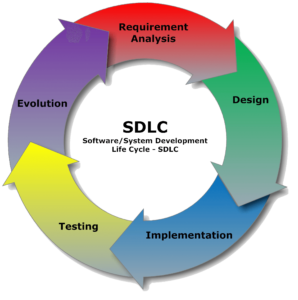How We Works

SDLC consists of following activities:
- Planning / Analysis: The most important parts of software development, requirement gathering or requirement analysis are usually done by the most skilled and experienced software engineers in the organization. After the requirements are gathered from the client, a scope document is created in which the scope of the project is determined and documented.
- Designig : Our Designer Design According To Our Client Requirement.
- Implementation: The software engineers start writing the code according to the client’s requirements.
- Testing: This is the process of finding defects or bugs in the created software.
- Documentation: Every step in the project is documented for future reference and for the improvement of the software in the development process. The design documentation may include writing the application programming interface (API).
- Deployment and Maintenance: The software is deployed after it has been approved for release.
- Maintaining: Software maintenance is done for future reference. Software improvement and new requirements (change requests) can take longer than the time needed to create the initial development of the software.
There are several software development models followed by our organizations:
- Waterfall Model: This model involves finishing the first phase completely before commencing the next one. When each phase is completed successfully, it is reviewed to see if the project is on track and whether it is feasible to continue.
- V-Shaped Model: This model focuses on execution of processes in a sequential manner, similar to the waterfall model but with more importance placed on testing. Testing procedures are written even before the commencement of writing code. A system plan is generated before starting the development phase.
- Incremental Model: This life cycle model involves multiple development cycles. The cycles are divided up into smaller iterations. These iterations can be easily managed and go through a set of phases including requirements, design, implementation and testing. A working version of the software is produced during the first iteration, so working software is created early in the development process.
